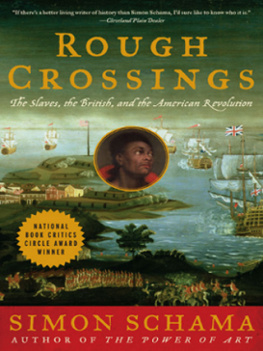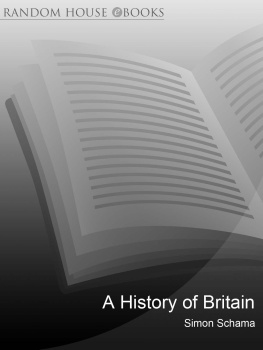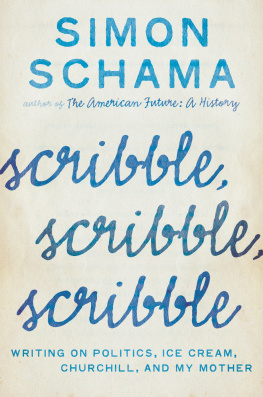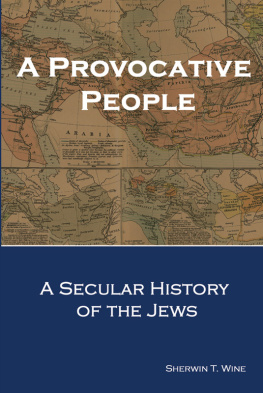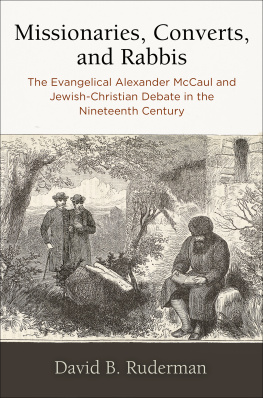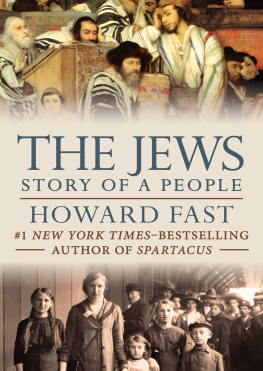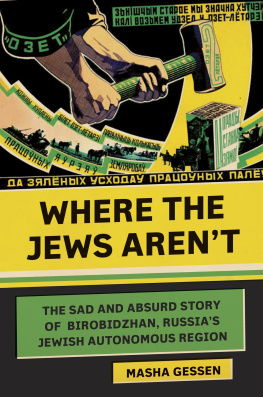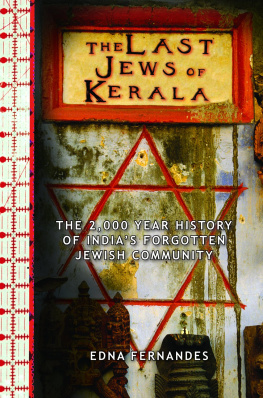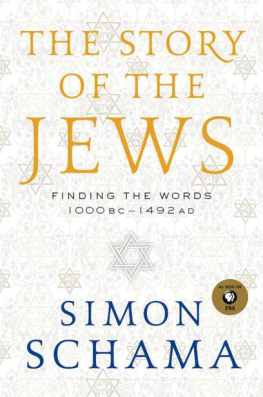theres an old synagogue.
is me.
my heart.
a museum.
I. David
Sometime, somewhere, between Africa and Hindustan, lay a river so Jewish it observed the Sabbath. According to the ninth-century traveller Eldad the Danite, for six days of the week the Sambatyon pushed a heavy load of rocks along its sandy course. On the seventh day, like the Creator fashioning the universe, the river rested. Some writers described the Sambatyon shrivelling overnight into a dry bed. Others swore that the river was waterless: a moving road of stone, its rocks tumbling and grinding against each other so abrasively that its sound, a low thunder, like a tempest at sea, could be heard a mile away.
In 1480, Eldads Letters were published in Mantua, so one of the very earliest printed Hebrew texts was a journey into the imagination. But the limits of the world were shifting with every caravel sailing around the coasts of Africa and north-east to the Indies. The most fanciful thing could turn out to be true. And there was another pressing reason to hope that an intrepid traveller might find the Sambatyon. On the far side of its banks were said to dwell four of the Lost Tribes of Israel, the people who had been carried away by the conquering Assyrians in the eighth century BCE . All that was known of the location of their ultimate exile was that it was somewhere orientally remote, since the Assyrians had ruled a vast realm stretching from the coast of Yemen to the shores of the Caspian. But find the Sambatyon and you would find the Israelites, preserved in exile like insects in amber. Everything about them was miraculous. They rode about on elephants in a countryside free from noxious creatures. There is nothing unclean among them... no wild beasts, no flies, no fleas, no lice, no foxes, no scorpions, no serpents, no dogs... They lived in handsome, towered dwellings; dyed their clothes vermilion; kept no servants, but tilled the fruitful land themselves. Pomegranates without limit were theirs to harvest; succulently pulpy figs, honey to the bite, dropped from the trees. Their land was kosher Cockayne.
Even those who suspected that Eldads story was, in every sense, far-fetched, longed to know more, for the discovery of the river, and beyond it these lost Israelites, could signal what every Jew yearned for. Tradition had it that the appearance of the liberating prince from the house of David, the true Messiah, the Redeemer of Jerusalem, the Rebuilder of the Temple, would be heralded by the rediscovery of the Lost Tribes of Israel, with the tribe of Reuben in their vanguard. When Constantinople fell to the Turks in 1453, it was rumoured that the Sambatyon had stopped running altogether, and that the Lost Tribes were preparing to rejoin the world, if, indeed, they had not already done so. Rabbi Obadiah of Bertinoro, no gullible fool, staying in Jerusalem in 1487, made sure to ask freed slaves there whether they had news of the Sambatyon and the people beyond. The Jews of Aden, he wrote to his brother, relate all this with a certain confidence as if it were well known and no one ever doubted the truth of their assertions.
Reunion with the Lost Tribes of Israel became a consuming obsession for Christians as well as Jews. For the former there were reasons strategic and reasons apocalyptic to want the story of the Sambatyon and the Tribes to be true, and they both converged in a Hebrew moment. If the Israelites dwelled somehow beyond the limits of the Muslim world, whether in Africa or Asia, contact with them offered the opportunity to launch an attack on the Turks from the rear. Jews had already been sent by the king of Portugal to find the realm of Prester John, said to be a Christian king powerful in those faraway lands and close to the Lost Tribes. A holy alliance was within reach. The Last Days would be hastened: the long-prophesied battle of titanic antagonists, Gog and Magog, would be joined. Skulls would crack; hosannas would sound; the earth would bubble with blood. Divinely appointed warriors, magnificently arrayed, spears glittering, would go forth to battle the legions of the Antichrist. Following their victory a Christian golden age would commence. Led by the lost Israelites, the rest of the Jews would at last see the error of their ways and troop in their multitudes to the font. Christ would return, radiant in numinous majesty. Glory be to God.
And then, around the festival of Hanukkah in 1523, a small, dark man, his bony frame taut from habitual fasting, fetched up in Venice and declared himself to be David, son of King Solomon and brother to King Joseph, ruler of the tribes of Reuben, Gad and half Manasseh. The Reubenite himself encouraged the view that he had indeed come from that long-sought-after place where black Jews and Christians were territorial neighbours while warring with each other. The ambassador maintained that others of the missing tribes those of Simeon and Benjamin were dwellers by the Sambatyon River, while his own kingdom was in the neighbouring wilderness of Habor. Still further off were the rest of Israels lost people. So could this Jewish David be the long-expected one, carrying on his meagre frame the news that Jews and Christians alike wanted to hear?
At the turn of the sixteenth century, following the trauma of the expulsions from Spain and Portugal, messianic yearnings had been felt throughout European Jewry. In 1502 in Adriatic Istria, Asher Laemmlein Reutlingen, a pious and entranced master of Kabbalah, had declared that if the Jews atoned for their transgressions, the Messiah would appear within six months. The Church would collapse of its own accord (he imagined it physically, towers and spires crumbling to the ground), and Jerusalem would be liberated in time for the next Passover to be celebrated in the reclaimed city of David. In Jewish communities in northern Italy, southern Germany and beyond, fast days were proclaimed in response to Laemmleins appeal. At least one man who should have known better, the father of the historian David Gans, in far-off Prague, believed so fervently in the prophecies of Laemmlein that he demolished his matzo oven. But the acts of mass repentance failed to impress the Almighty, for no redeemer showed up as prophesied. Dispirited, Father Gans was obliged to bake his unleavened bread in someone elses oven.
But while it lasted, the Laemmlein craze had the most powerful impact on the communities of northern Italy where there was a high concentration of German Jews who had fled persecution in Bavaria and Franconia. The disappointment dampened but did not extinguish messianic expectations; Laemmlein had just been the wrong man in the wrong year. The astronomer-astrologer Bonet de Lattes, who was also chief rabbi of Rome (and physician to popes Alexander VI and Leo X), went back to the ring-dial he had invented to calculate the altitude of stellar and solar bodies by night as well as day, and arrived at 1505 as the correct year when Jupiter and Saturn would be in Messiah-auspicious alignment. Another anticlimax ensued, but Bonet de Lattes had inaugurated a series of popular annual almanacs marrying up astrological and theological predictions about the timing of the Great Appearance. So when David Ha-Reuveni, the little warrior prince, showed up in Venice in 1523 in his dark silk, there was much excited poring over astral signs. In Ferrara, Farissol, working on his book, revisited the mythic geography of Israelite exile. The wilderness of Habor where King Joseph ruled was indeed one of the places identified in the Books of Kings and Chronicles as the destination of the deported tribes. Farissol was convinced this must be in Asia. Others twisted Habor into Khaibar, the ancient city in the Arabian Hejaz where Jews had lived before the coming of Islam. But a rough location for the coming climactic battle sufficed: somewhere between the horn of Africa and the mountains of India. At any rate, there could be no doubt that the wars of the Ottoman sultan, Suleyman the Magnificent, and the Holy Roman Emperor, Charles V, would one day end in messianic conflict. That day was close. A Jerusalem Jew had written that the king of Poland himself (though why he should have known this is mysterious) had reported that the Sambatyon was now so calm that four of the Lost Tribes had already waded through it, and another five were preparing to make the crossing. A great reunion of lost and found Jews was surely at hand. So when David spoke in a strange, sometimes unintelligible, semi-stammering Hebrew clotted with Arabic, this previously unheard accent seemed, excitingly, to belong to some remote place. He was the bearer of something ancient, immemorial, thrown, by Gods design, into modern time.


